2N Lift8 Central Unit
It is the intercom unit of multiple elevator systems. It is designed for engine room, pit, in-cab, on-cab communication. It allows all communication points to make conference calls and provides instant communication.
VoIP, GSM and PSTN communication types can be selected using different cards. Up to 8 elevators can be communicated via a single Lift8 Central Unit.
It has EN81-20 and EN81-28 certificates to which it refers.
EN 81-20 Replaces EN81-1
Specifies the standard and emergency call system requirements in more detail. Elevators must now be equipped with additional communication units. Additional equipment must be installed with the ALARM system under the EN 81-28 standard to enable a person trapped inside the shaft to make an emergency call. This should be accessible where there is a risk of a person being stuck in an elevator.

EN 81-28 Emergency Calls
The purpose of this standard is to improve communication in emergency situations in elevators. It eliminates the risk of jamming passengers due to malfunctions in the elevator installation. This is accomplished by equipping all elevators with an emergency call system. This alarm system must be able to establish two-way voice communication between people in the elevator car and the remote emergency (rescue) service. The EN 81-28 standard applies to all new and modernized elevators.

EN 81-70 Barrier-free elevators
EN 81-70 defines minimum requirements for safe independent access and use of elevators by all passengers, including elevators. It provides guidance on how best to increase accessibility in elevators. This standard ensures that people with mobility impairments (strollers, wheelchairs, walking aids, etc.) or other disabilities (mentally disabled, visually and hearing impaired, etc.) can easily enter elevator cabins and use elevators without restrictions.

EN 81-71 – Vandal Resistant Lifts
The EN 81-71 standard defines the testing methodology and classification of elevators according to vandal resistance. It requires special protective measures and safety rules against actions that may cause damage to elevators or injury to passengers. In addition, this standard specifies design features for projects that require additional security to protect against the risk of vandalism.
EN 81-72 – Fire Situations
EN 81-72 deals with significant hazards, hazardous situations and events mostly related to firefighter lifts installed in new buildings. It is primarily intended for use by passengers and can therefore be used for firefighting and evacuation purposes under the direct control of firefighters. These elevators can only operate in a protected environment. It is designed with additional protection, control and signals that provide rescue from inside or outside elevator cabins in case of fire.
EN 81-80 – Elevator modernization
EN81-80 SNEL (Safety Norm for Existing Elevators) increases the safety of existing passenger and freight elevators. The aim is to comply with the level of safety provided by newly installed elevators. Based on the risk assessment, this standard defines the rules for improving the safety of existing elevators and classifies various hazards and dangerous situations. It also lists corrective actions that can be taken to improve security.
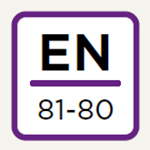
2N Lift8 Central Unit
It is the intercom unit of multiple elevator systems. It is designed for engine room, pit, in-cab, on-cab communication. It allows all communication points to make conference calls and provides instant communication.
VoIP, GSM and PSTN communication types can be selected using different cards. Up to 8 elevators can be communicated via a single Lift8 Central Unit.
It has EN81-20 and EN81-28 certificates to which it refers.
EN 81-20 Replaces EN81-1
Specifies the standard and emergency call system requirements in more detail. Elevators must now be equipped with additional communication units. Additional equipment must be installed with the ALARM system under the EN 81-28 standard to enable a person trapped inside the shaft to make an emergency call. This should be accessible where there is a risk of a person being stuck in an elevator.

EN 81-28 Emergency Calls
The purpose of this standard is to improve communication in emergency situations in elevators. It eliminates the risk of jamming passengers due to malfunctions in the elevator installation. This is accomplished by equipping all elevators with an emergency call system. This alarm system must be able to establish two-way voice communication between people in the elevator car and the remote emergency (rescue) service. The EN 81-28 standard applies to all new and modernized elevators.

EN 81-70 Barrier-free elevators
EN 81-70 defines minimum requirements for safe independent access and use of elevators by all passengers, including elevators. It provides guidance on how best to increase accessibility in elevators. This standard ensures that people with mobility impairments (strollers, wheelchairs, walking aids, etc.) or other disabilities (mentally disabled, visually and hearing impaired, etc.) can easily enter elevator cabins and use elevators without restrictions.

EN 81-71 – Vandal Resistant Lifts
The EN 81-71 standard defines the testing methodology and classification of elevators according to vandal resistance. It requires special protective measures and safety rules against actions that may cause damage to elevators or injury to passengers. In addition, this standard specifies design features for projects that require additional security to protect against the risk of vandalism.

EN 81-72 – Fire Situations
EN 81-72 deals with significant hazards, hazardous situations and events mostly related to firefighter lifts installed in new buildings. It is primarily intended for use by passengers and can therefore be used for firefighting and evacuation purposes under the direct control of firefighters. These elevators can only operate in a protected environment. It is designed with additional protection, control and signals that provide rescue from inside or outside elevator cabins in case of fire.

EN 81-80 – Elevator modernization
EN81-80 SNEL (Safety Norm for Existing Elevators) increases the safety of existing passenger and freight elevators. The aim is to comply with the level of safety provided by newly installed elevators. Based on the risk assessment, this standard defines the rules for improving the safety of existing elevators and classifies various hazards and dangerous situations. It also lists corrective actions that can be taken to improve security.



